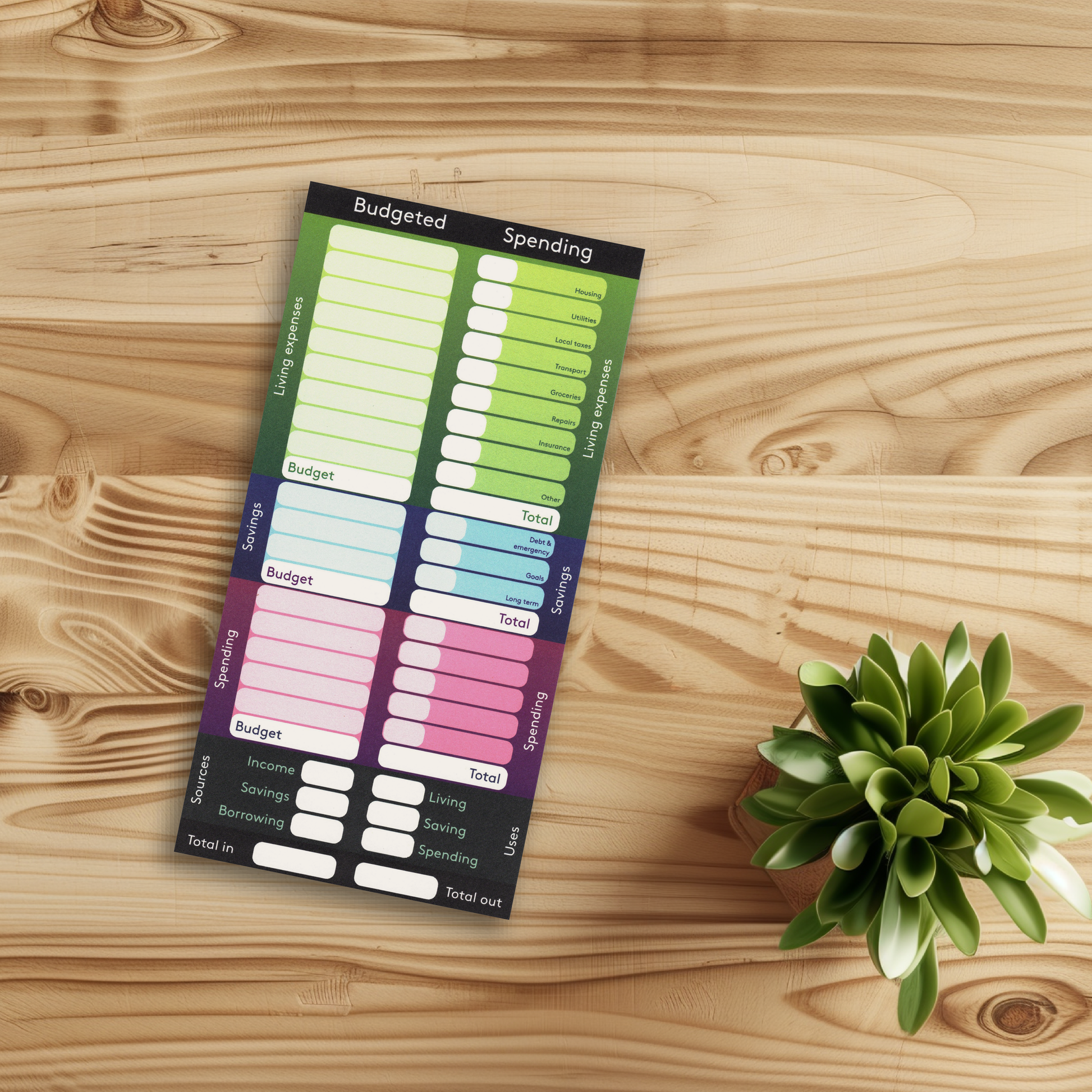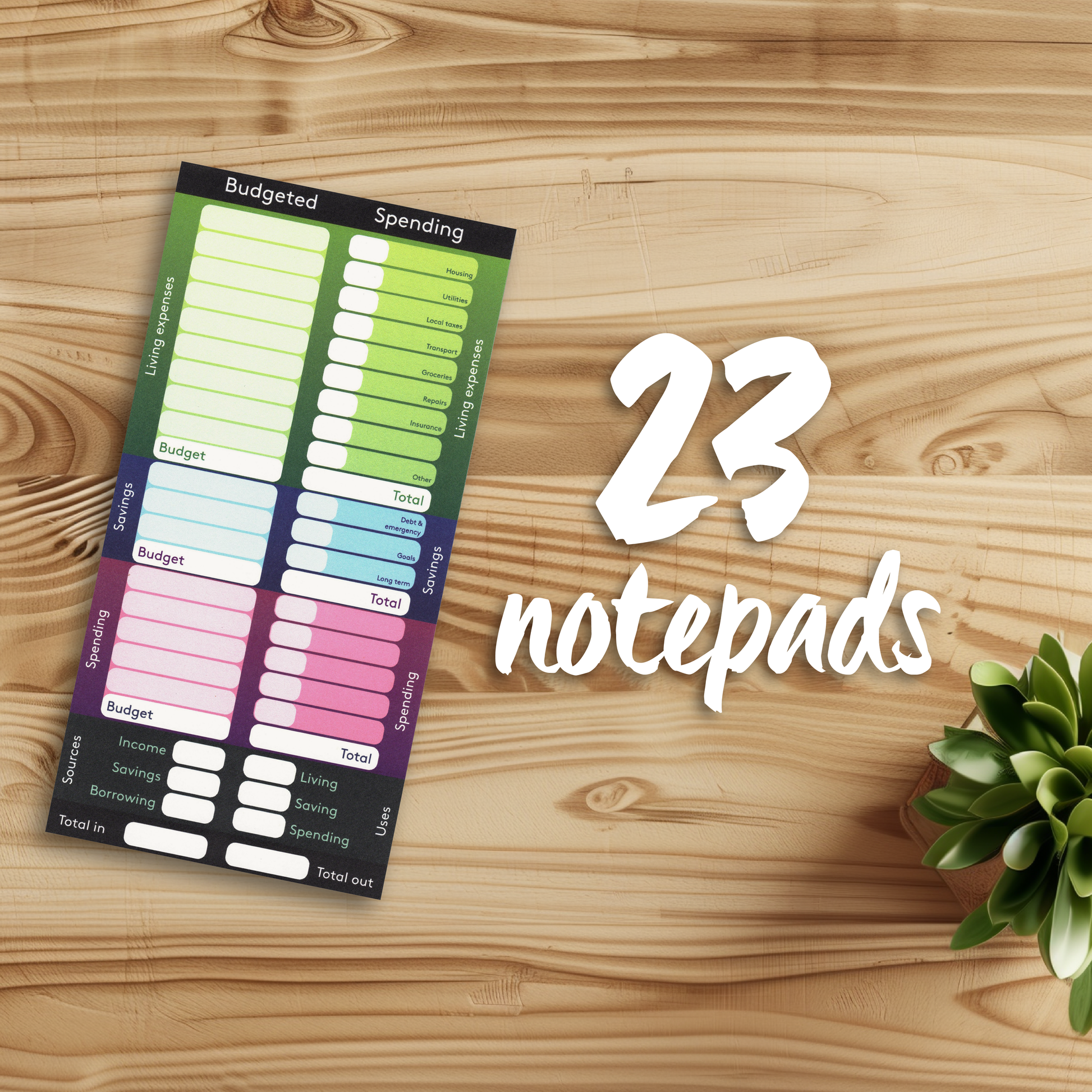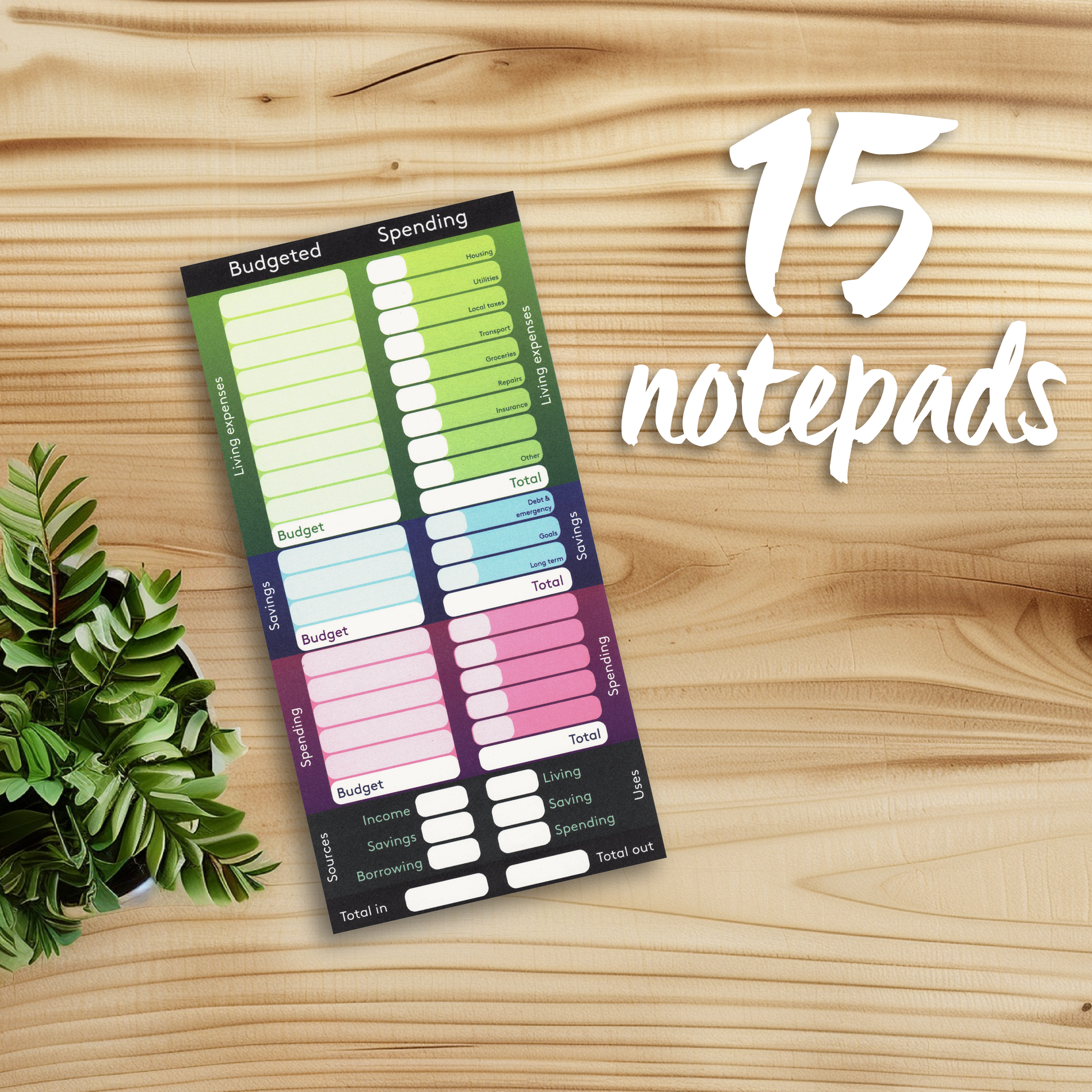ingeniousdesign
Finances notepad
Finances notepad
Low stock: 1 left
Couldn't load pickup availability
- DL sized notepads (10.5 x 21.0 cm)
- 50 sheets of high quality colour print paper per notepad
- Designed to help you track where your time is going
- Easy to write on
- Designed in Bristol, UK. Made in Germany.
The Problem we were trying to solve
We’re a bit obsessed with budgeting. It got us through the early lean years of business and made unexpected life events less stressful. We did feel that we were often being pushed too much into spending less as opposed to spending well. We really liked YNAB’s policy of giving every pound (or dollar) a job as it helps you see money as a resource rather than something to feel ashamed or guilty about (which seemed to be people’s dominant emotions whenever they were asked about their spending). We found that making a plan in advance was always really helpful, and having that plan focus on positive actions such as saving for specific items rather than just trying to cut spending was also helpful. We really like apps that track our spending, but I’m too lazy to sort the data into something useful.
What we came up with
This notepad is based on the principles that all money in should be allocated for a job, and that you should allocate financial resources on a 50-20-30 distribution across essential spending, long term saving, and non-essential spending. At the start of the month, plan your spending ahead and budget for all the money that’s come in. At the end of the month, write down what actually got spent on everything. Use the columns at the bottom to balance the books, either indicating where the extra money came from if you spent too much (savings or credit) and where the extra money went if you spent less that you thought. Ideally everything should balance like a double-entry book-keeping record. To indicate the 50-20-30 we split the notepad categories into three different colours and added a tally at the bottom.
Share







Specification
'- DL sized notepads (10.5 x 21.0 cm)
- 50 sheets of high quality colour print paper per notepad
- Easy to write on
- Designed in Bristol, UK
- Made in Germany.

How to use
1. Get a rough estimate of how much you need to spend each month on your bills and basic living costs. Write these in the green section
2. Write down your savings goals for the month in the blue section
3. Write down your fun money goals for the month in the pink section
4. Write down how much your expected income is at the bottom. If this doesn't cover what you plan to spend, are you going to make it up using savings or borrowing?
5. If you're not happy borrowing and using up savings, go back and try another budget
6. At the end of the month, check whether you stuck to your budget or not by writing down how much you actually spent
7. Write down where this came from. Was it income, savings or borrowing? If you're not happy with how much came from borrowing or savings, try a different budget this month.
Themed sets containing Finances notepad
-
 Sale
SaleFinances notepad
Regular price From £3.00 GBPRegular priceUnit price / per£4.00 GBPSale price From £3.00 GBPSale -
Personal Organisation
Regular price £5.00 GBPRegular priceUnit price / per£10.00 GBPSale price £5.00 GBPSale -
Finances (digital sample)
Regular price £0.00 GBPRegular priceUnit price / per£0.00 GBPSale price £0.00 GBP -
 Sale
SaleWholesale - Finances
Regular price £0.60 GBPRegular priceUnit price / per£1.50 GBPSale price £0.60 GBPSale
Test it out for free
Want to try out the Finances notepad before buying?
Download a free digital sample to print and test out!
Finances (digital sample)
Print this downloadable PDF on your home printer to get a feel for the notepad size and to test out the design.















